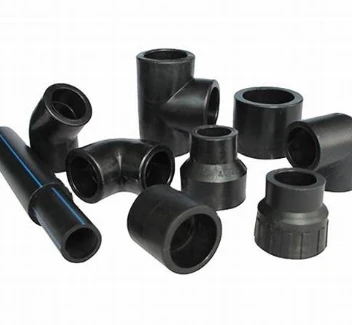Rubber Seals for Butterfly Valves Enhancing Sealing Performance and Durability
Understanding Butterfly Valve Rubber Seals
Butterfly valves are critical components in various industrial applications, particularly in controlling the flow of liquids and gases. A crucial part of a butterfly valve is its rubber seal, which plays a significant role in ensuring robust performance and longevity. In this article, we will explore the importance of butterfly valve rubber seals, their types, and how they contribute to the overall functionality of the valve.
What is a Butterfly Valve?
A butterfly valve is a type of quarter-turn valve that regulates the flow of a fluid through a pipe. The valve’s mechanism consists of a disc (the “butterfly”) that rotates around a central axis. When the handle is turned, the disc opens or closes, allowing or restricting flow. Butterfly valves are favored for their lightweight design, low cost, and ease of operation. They are commonly used in water supply systems, HVAC applications, and various industrial processes.
The Role of Rubber Seals
Rubber seals are essential components of butterfly valves, providing a tight sealing mechanism that prevents leaks. These seals are typically located on the valve’s disc or body and are designed to compress when the valve is closed, creating a barrier that inhibits fluid passage. This sealing function is vital for maintaining system efficiency, preventing contamination, and ensuring safety in processes that involve hazardous materials.
Types of Rubber Seals
There are several types of rubber seals used in butterfly valves, each offering unique properties that cater to specific applications
1. EPDM (Ethylene Propylene Diene Monomer) This synthetic rubber is highly resistant to heat, ozone, and weathering. EPDM is ideal for water and steam applications but is not suitable for petroleum-based fluids.
2. NBR (Nitrile Butadiene Rubber) Known for its excellent resistance to oils and fuels, NBR is widely used in industries dealing with petroleum products. However, NBR is less resistant to ozone and aging compared to other materials.
3. Viton (Fluoroelastomer) This high-performance rubber offers excellent chemical resistance, making it suitable for aggressive media. Viton seals can withstand high temperatures and are often used in the chemical processing industry.
butterfly valve rubber seal

4. Silicone Rubber With its high-temperature stability and flexibility, silicone rubber seals are great for applications involving extreme temperatures, both hot and cold. However, silicone is not recommended for applications involving oils.
Factors Affecting Seal Performance
The performance of rubber seals in butterfly valves can be influenced by several factors, including
- Temperature Extreme temperatures can cause rubber seals to expand or contract, affecting their sealing capabilities. It’s critical to choose a seal material that can withstand the operating temperature of the application.
- Chemical Compatibility Different rubber materials react differently to various chemicals. Selecting the correct seal material based on the fluids involved is essential to prevent degradation and ensure a long service life.
- Pressure The pressure within the system can also impact seal performance. High pressures may require reinforced or specialized seals to maintain integrity.
- Environmental Conditions Exposure to UV light, ozone, and moisture can weaken rubber seals over time. Selecting seals with weather-resistant properties can enhance durability.
Maintenance and Replacement
Regular maintenance of butterfly valves and their rubber seals is crucial for optimal performance. Routine inspections can help identify wear and tear, allowing for timely replacements before failures occur. Proper lubrication, cleaning, and adherence to manufacturer guidelines can prolong the life of rubber seals.
Conclusion
In summary, butterfly valve rubber seals are integral to the efficient and safe operation of butterfly valves across various industries. Understanding the types of seals, their roles, and the factors influencing their performance is vital for ensuring reliable valve operation. By selecting the appropriate seal material and maintaining the valves properly, industries can enhance the longevity and functionality of their fluid control systems, ultimately improving process efficiency and safety.
-
The Key to Fluid Control: Exploring the Advantages of Ball Valves in Industrial SystemsNewsJul.09,2025
-
The Versatile World of 1, 2, and 3 Piece Ball ValvesNewsJul.09,2025
-
Stainless Steel Ball Valves: The Ideal Choice for Efficient Flow ControlNewsJul.09,2025
-
Optimizing Fluid Control with Ball Float ValvesNewsJul.09,2025
-
Manual Gate Valves: Essential for Control and EfficiencyNewsJul.09,2025
-
Everything You Need to Know About Butterfly ValvesNewsJul.09,2025
-
The Versatility of Wafer Type Butterfly ValvesNewsJul.08,2025




